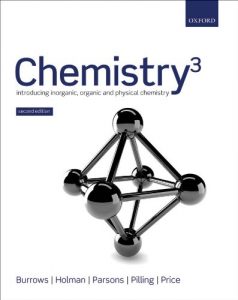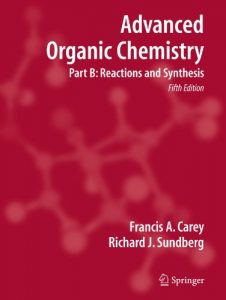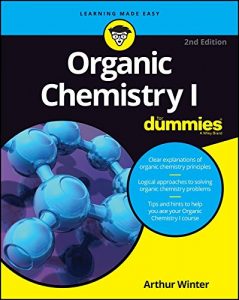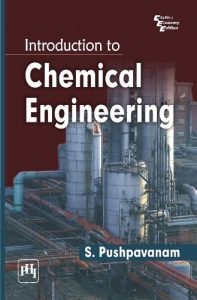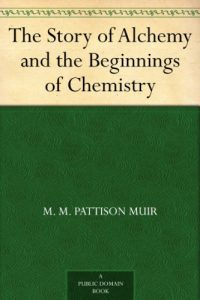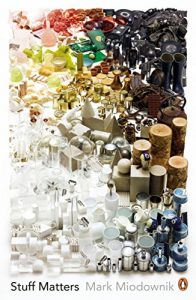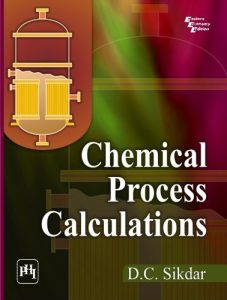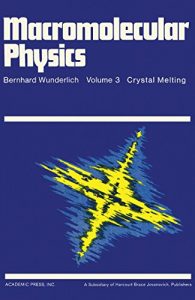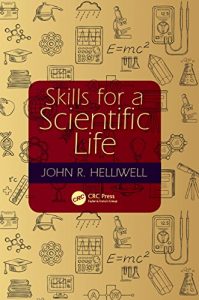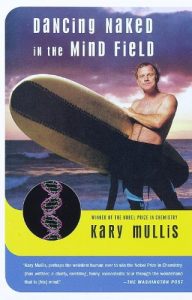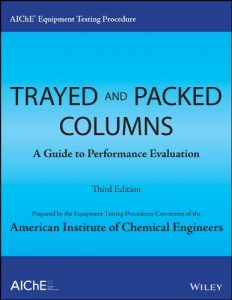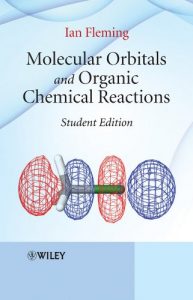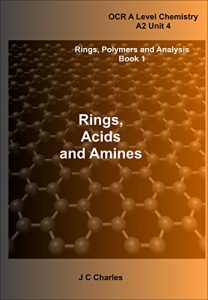I 99eBooks è una directory di eBook. Cerchiamo e classificato intorno alle eBooks Web per te!
Tutti i diritti riservati. I libri e libri elettronici sono di proprietà dei rispettivi proprietari.
Chemistry³: Introducing inorganic, organic and physical chemistry
Chemistry is widely considered to be the central science: it encompasses concepts on which all other branches of science are developed. Yet, for many students entering university, gaining a firm grounding in chemistry is a real challenge. Chemistry³ responds to this challenge, providing students with a full understanding of the fundamental principles of chemistry on which to build later studies.
Uniquely amongst the introductory chemistry texts currently available, Chemistry³ is written by a team of chemists to give equal coverage of organic, inorganic and physical chemistry - coverage that is uniformly authoritative. The approach to organic chemistry is mechanistic, rather than the old-fashioned 'functional group' approach, to help students achieve a fuller understanding of the underlying principles.
The expertise of the author team is completed by two specialists in chemistry education, who bring to the book a wealth of experience of teaching chemistry in a way that students enjoy and understand. The result is a text that builds on what students know already from school and tackles their misunderstandings and misconceptions, thereby providing a seamless transition from school to undergraduate study.
The authors achieve unrivalled accessibility through the provision of carefully-worded explanations and reminders of students' existing knowledge; the introduction of concepts in a logical and progressive manner; and the use of annotated diagrams and step-by-step worked examples. Students are encouraged to engage with the text and appreciate the central role that chemistry plays in our lives through the unique use of real-world context and photographs.
Chemistry³ tackles head-on two issues pervading chemistry education: the students' mathematical skills, and their ability to see the subject as a single, unified discipline. Instead of avoiding the maths, Chemistry³ provides structured support, in the form of careful explanations, reminders of key mathematical concepts, step-by-step calculations in worked examples, and a Maths Toolkit, to help students get to grips with the essential mathematical element of
chemistry. Frequent cross-references highlight the connections between each strand of chemistry and explain the relationship between the topics, so students can develop an understanding of the subject as a whole.
Online Resource Centre:
The following resources are available to provide a full teaching and learning package:
For students:
· Interactive and animation-based activities which encourage students to actively learn.
· Fully-worked answers to the questions at the end of worked examples, boxes, and at the end of each chapter.
· 3D rotatable molecular structures and interactive 3D animations of key reactions.
· Video 'Screencasts' in which authors talk through selected examples and key reaction mechanisms step-by-step.
· Links to relevant video content, to demonstrate concepts discussed in the book.
· Learning outcomes, summaries, and key equations for each chapter of the book.
· A 'Transition to Chemistry' site for students about to embark on an undergraduate chemistry degree, to give a flavour of what undergraduate chemistry is like.
For registered adopters of the book:
· A 'test bank' of multiple choice questions.
· Illustrations from the book available to download.
Uniquely amongst the introductory chemistry texts currently available, Chemistry³ is written by a team of chemists to give equal coverage of organic, inorganic and physical chemistry - coverage that is uniformly authoritative. The approach to organic chemistry is mechanistic, rather than the old-fashioned 'functional group' approach, to help students achieve a fuller understanding of the underlying principles.
The expertise of the author team is completed by two specialists in chemistry education, who bring to the book a wealth of experience of teaching chemistry in a way that students enjoy and understand. The result is a text that builds on what students know already from school and tackles their misunderstandings and misconceptions, thereby providing a seamless transition from school to undergraduate study.
The authors achieve unrivalled accessibility through the provision of carefully-worded explanations and reminders of students' existing knowledge; the introduction of concepts in a logical and progressive manner; and the use of annotated diagrams and step-by-step worked examples. Students are encouraged to engage with the text and appreciate the central role that chemistry plays in our lives through the unique use of real-world context and photographs.
Chemistry³ tackles head-on two issues pervading chemistry education: the students' mathematical skills, and their ability to see the subject as a single, unified discipline. Instead of avoiding the maths, Chemistry³ provides structured support, in the form of careful explanations, reminders of key mathematical concepts, step-by-step calculations in worked examples, and a Maths Toolkit, to help students get to grips with the essential mathematical element of
chemistry. Frequent cross-references highlight the connections between each strand of chemistry and explain the relationship between the topics, so students can develop an understanding of the subject as a whole.
Online Resource Centre:
The following resources are available to provide a full teaching and learning package:
For students:
· Interactive and animation-based activities which encourage students to actively learn.
· Fully-worked answers to the questions at the end of worked examples, boxes, and at the end of each chapter.
· 3D rotatable molecular structures and interactive 3D animations of key reactions.
· Video 'Screencasts' in which authors talk through selected examples and key reaction mechanisms step-by-step.
· Links to relevant video content, to demonstrate concepts discussed in the book.
· Learning outcomes, summaries, and key equations for each chapter of the book.
· A 'Transition to Chemistry' site for students about to embark on an undergraduate chemistry degree, to give a flavour of what undergraduate chemistry is like.
For registered adopters of the book:
· A 'test bank' of multiple choice questions.
· Illustrations from the book available to download.
